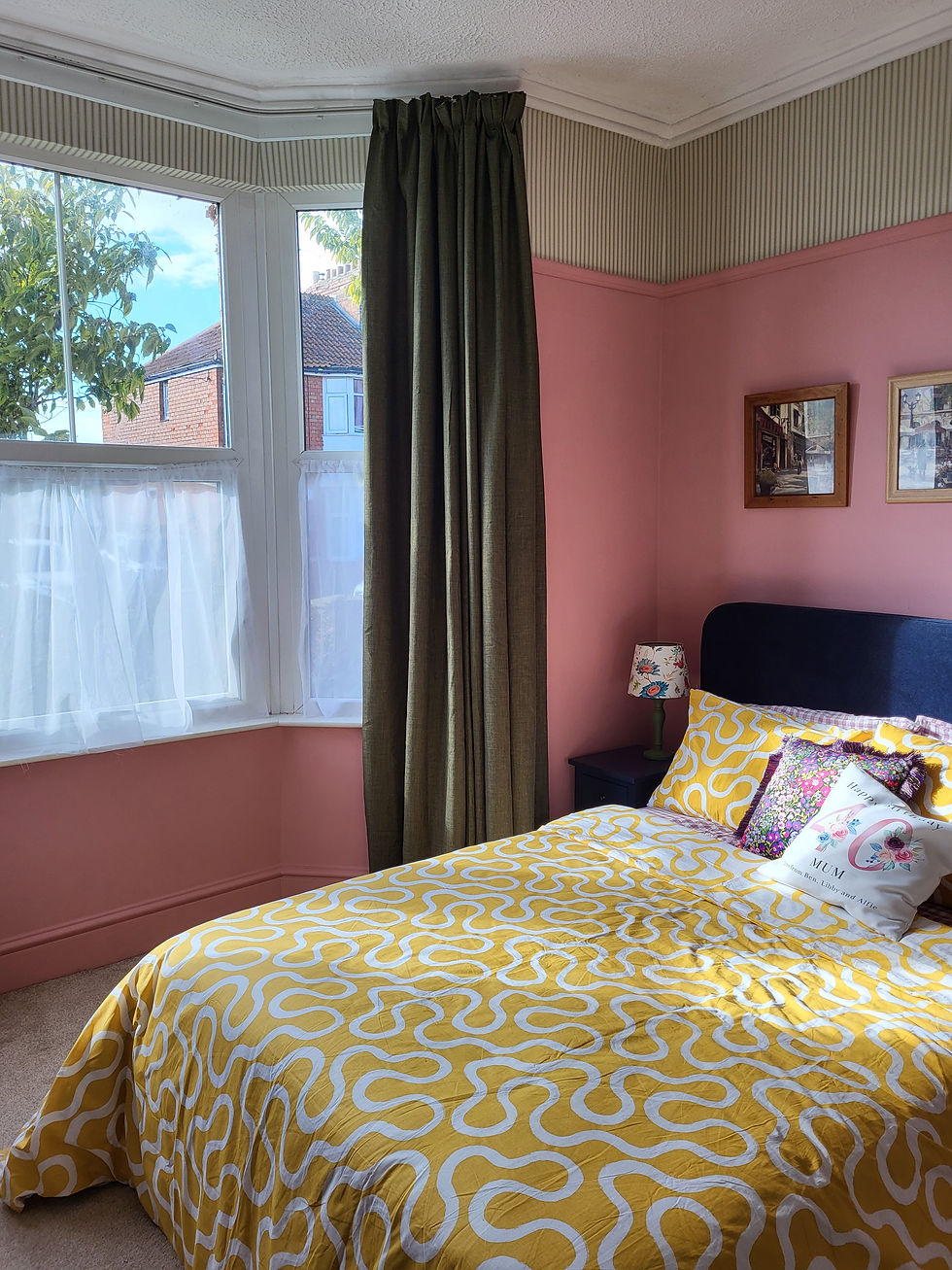The Colour Wheel
- rebeccalambertinte
- Jun 1
- 3 min read
The topic for this blog post has been inspired my daughter, Libby. This term, the whole school are doing an art project, with each class looking at a different artist. In her class, they have been studying Andy Warhol, and Alfie has been looking at the work of Kandinsky! As part of their work they had to explore the colour wheel and how it can be used. And this got me thinking!
We can probably all remember learning about primary and secondary colours at school, and possibly the warm and cool colours? What about your complementary and your related? Or your tint, tone and shade?! And why is any of this of any use when it comes to colour for our homes?
Well in a nutshell it matters because this is how we can build colour schemes and make sure our choices work together. This is called colour harmony.

Here are a few ways you could use a colour wheel to start to build a colour scheme.
Pick your starting colour. The main colour that will feature in a room. Let’s say it’s a blue. Using colours that sit either side of this on the colour wheel (or ‘relate’), will make for a tonal colour scheme giving you a calming space. So either side of the blues we have the greens and the purples.

If tonal calm isn’t really the vibe you want though, you can look at what sits opposite your main colour. So, again using blue, we find orange sits opposite (or ‘complements’) and so pairing colours which sit opposite each other gives you more contrast!

Perhaps you want even more drama in your colour palette though, in which case you might look at a split complementary scheme. This is where you take your main colour, and then the two colours which sit next to the opposite one. So with blue, you would be looking at red and yellow. Hello primary colours!

Now of course not many of us are going to decorate our rooms in the primary colours as you are all now picturing them. And this is where tint, tone and shade comes in.
Tint = adding white
Tone = adding grey
Shade = adding black
Now you will find thousands of variations of colours!! So the blue we used as our example might actually be a deep navy blue, which you use with a sage green, and a touch of lavender for accent. All related on the colour wheel, and they come together to give a calming, harmonious colour palette.

What about the complementary blue and orange? Well, actually we have used this in really quite a bold way in our eldest son’s room! But it doesn’t have to be like this – think of a mid-tone blue (blue with grey added) paired with a burnt orange and you have a very warm, sophisticated colour scheme.
And finally the split complementary, blue with yellow and red. Well, if we add white to all these colours, you end up with a lovely light sky blue, a primrose yellow, and a pastel pink – a perfect spring colour scheme!
So thank you Libby for the inspiration! I use my colour wheel all the time when I’m designing, so if you want to know more about how to put colours together, do get in touch.








Comments